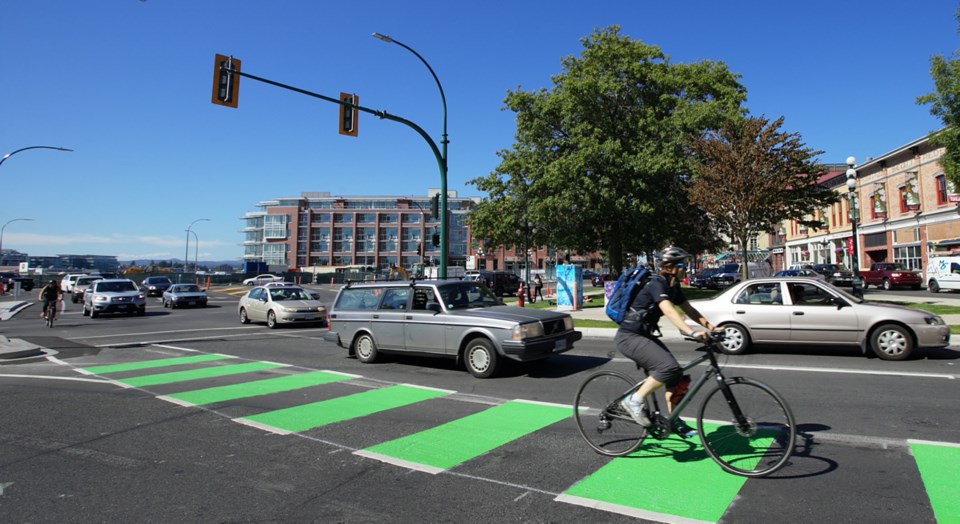The term “Biketoria” has become a divisive symbol of the battle between bikes and cars and should be forever ditched, says Mayor Lisa Helps.
Instead, she said, the city should look to calling its new multimillion-dollar cycling network just that — a cycling network — and focus on getting public buy-in for a “transportation mode shift.”
“One of my regrets of 2016 is this bike-versus-car dichotomy. I think it’s unnecessary. I think it’s unhelpful, and I think it keeps us stuck,” Helps said Thursday during council discussions on the city’s updated strategic plan.
“So I would like to never hear the word Biketoria again. I would like to talk about the implementation of our cycling master plan, our cycling network or whatever you want to call it, but have a broader view about transportation and moving people throughout the city.”
The term “Biketoria” was born from a branding exercise for the city’s network of cycling lanes, now in the beginning stages of construction. The plan aims to create eight cycling corridors, totalling 24 kilometres, that can be safely ridden by cyclists of all ages and abilities.
While cyclists have praised the proposal, others have said it will eliminate increasingly scarce street parking downtown and in urban hubs such as the Cook Street Village.
In an interview, Helps said people either love or hate the term. “I think when the community is polarized like that, it’s really difficult to move forward with addressing the transportation challenges and opportunities.”
She said she would like to focus on implementing a goal that encourages a “mode shift” so that half of all trips in the city are made by transit, walking or cycling — but also recognizes the remaining 50 per cent of trips will be in cars.
“I think it has become too all-or-nothing, and I just don’t think that’s useful,” Helps said. “When the city builders in the early 20th century built roads for the emerging technology of the time, known as the car, they didn’t call it ‘Cartoria.’ They just saw the future and built what was necessary.”
The first phase of the cycling network will see 5.4 kilometres of separated bike lanes built in the downtown core. Its cost is estimated at $7.6 million.
Construction of the first two-way bike lane on Pandora Avenue between Store and Cook streets began last fall and is scheduled to open in the spring.
The lane will be physically separated from motor vehicle lanes by a combination of on-street parking spaces, bollards, paint and planters.
By the time it is completed at a cost of $3.4 million, 44 parking stalls out of 100 along the 1.2-kilometre Pandora corridor will be removed.
Once the Pandora lane is completed, work is slated to begin on a similar two-way separated bike lane on the north side of Fort Street, running between Wharf and Cook streets.
Construction of the Fort Street lane is estimated to cost $2 million, and will mean the loss of 30 of 208 on-street parking stalls. City staff note that while parking stalls will be lost, parking for 100 bikes is to be installed.
Several councillors have said that the bike lanes are being wrongly pegged as a major factor in downtown Victoria’s tight parking — which, they say, more properly should be attributed to the building boom that is transforming parking lots into condo and office buildings.
Future phases of the network call for the bike lanes to continue to the Cook Street Village, with the elimination of Cook Street’s centre turn lane and the development of parking-protected bicycle lanes, where parked cars are used to separate the bike lanes from traffic.



